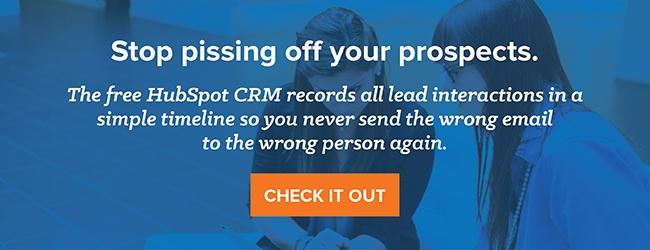

Developing opening lines for prospecting emails or sales letters is one thing; developing a pitch is another. And what I’m going to suggest to you works more effectively and is more compelling than a traditional sales pitch is the “anti-pitch.”
Here's how it works.
If I were to reach out to, say, CEO Cathy, chief executive of software company Email Marketing Inc. about my CartoonLink service, I would start with, “I can double your members’ email open rates. Is that of interest?” But I would already have told her that in my first outreach, so I’d proceed with my anti-pitch. (Note: I designed the "anti-pitch" specifically to reach out to CEOs, but you can use this strategy when speaking with any decision maker.)
I’d introduce myself: “I’m Stu Heinecke, president of CartoonLink. I’m also one of The Wall Street Journal cartoonists and a hall of fame-nominated direct marketer. I have a device that has been doubling open rates for my clients, and I have a feeling that might be strategic for you to offer to your members. But I don’t really know if that fits with your plans. Can you discuss that with me for a minute?”
If she says yes, I would continue: “From what I’ve been able to learn, you have 650,000 users of your email marketing platform. Email Marketing Inc. positions itself as a ‘targeted marketing tool,’ and you yourself have authored a book on the same subject. I’m thinking that if you were able to offer my cartoon devices easily and affordably to your member base, it would increase their results, thereby increasing their engagement with your services. Does that make sense?”
If she responds affirmatively, I’d ask her how she might see it fitting with their service. I’d ask what she might see as next steps and who I should connect with. I’d offer to send a copy of my book so she can understand the thinking behind the CartoonLink service. And I’d ask for her permission to correspond directly via email. And then I would end the call.
As this new relationship begins, I want her to know that I respect her time. It’s one of the most important things I can communicate to her.
I call this approach the "anti-pitch" because I’m not jumping down my prospect’s throat, jamming in as many words as I can about my product before she cuts me off. I’m having a relaxed, exploratory conversation with her, and I’m giving her several opportunities to cut it off.
But with each burst of information, I’m also telling her why I think there may be value for her. And I’m checking in constantly, to make sure she agrees with my thinking. If she doesn’t, that’s okay. She has given me some of her highly valuable time and I am grateful for the opportunity. It’s either a fit or it isn't.
The one thing I am not doing is pitching. I’m collaborating and inviting her participation and scrutiny. I’m not trying to coerce her. I’m simply bringing something I think she may find interesting and strategically important to her attention. I haven’t even mentioned my brand or any particular program yet.
My prospecting strategy also follows these principles, and by the time I reach a CEO, I've already used it to clear a path. I have a relationship with her assistant, I have demonstrated the value I want to bring to their platform, and I have been very open about giving her an out. When you do that, the contact becomes intrigued. They start to trust you, because you have already shown a great deal of consideration.
You’re not pushing your way past a gatekeeper and onto the phone with the VIP. They wouldn’t allow it, and even if you did get through, it wouldn’t work.
You will need to craft your anti-pitch in the same way. Start with a brief statement that gets them intrigued and asking, “How would you do that?”
Then have an exploratory conversation: “I have this solution that I think will work for your company/project/etc., but I’m not sure if it is a fit after all. May I explain?”
The crucial thing to remember during every step of the sales process is ask the contact if they agree with your thinking and what they might see as next steps. In this way, you get buy-in at each step and ensure the conversation is valuable to both of you, leading to better outcomes.
Editor's note: This blog post was excerpted from the book How to Get a Meeting With Anyone and is republished here with permission.
Stu Heinecke is also a Wall Street Journal cartoonist, co-creator of the NASP's 30-day behavioral program, "The Power of Contact Marketing," host of Contact Marketing Radio and founder of Contact, a contact marketing agency devoted to helping enterprise sales teams break through to named accounts with greater efficiency.





![How to Win a Deal on Shark Tank: The Anatomy of a Perfect Business Pitch [Infographic]](https://53.fs1.hubspotusercontent-na1.net/hubfs/53/________SHARK%20%281%29.jpg)

![6 Essential Elements of a Successful Sales Pitch or Presentation [Infographic]](https://53.fs1.hubspotusercontent-na1.net/hubfs/53/sales-pitch.jpg)


